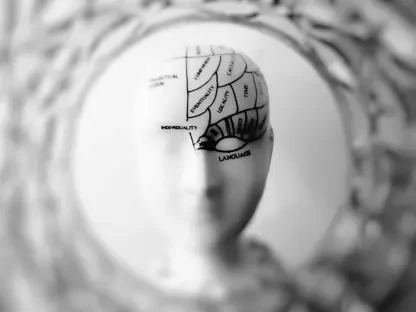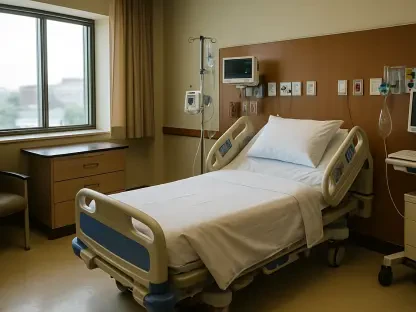What happens when a city of over 30 million people struggles to provide timely medical diagnoses to its residents? In Delhi, this pressing challenge is on the verge of a dramatic turnaround, offering hope to millions who have faced long waits for critical tests. Picture a patient, anxious and in pain, waiting weeks for a vital CT scan that could determine their treatment path. Now, envision that wait shrinking to mere days or even hours. With the rollout of over 230 advanced radiology machines across government hospitals, the capital is poised to transform its healthcare landscape, promising faster, more accessible diagnostic services for millions.
The Heart of the Matter: Why Diagnostics Can’t Wait
At the core of this transformation lies a stark reality: Delhi’s public healthcare system has long been overwhelmed. Government hospitals, serving a vast and diverse population, often see patients enduring prolonged delays for essential tests like MRIs and ultrasounds. These delays can mean the difference between early intervention and irreversible health decline. The introduction of cutting-edge radiology equipment is not just an upgrade—it’s a lifeline for countless individuals who rely on public facilities for care.
This initiative addresses a critical bottleneck in the system. With the population continuing to grow and healthcare demands surging, the strain on existing infrastructure has reached a breaking point. By prioritizing diagnostic speed and accuracy, the government aims to ensure that no patient is left waiting when time is of the essence, setting a new standard for public health responsiveness.
A Massive Overhaul: Unpacking the Radiology Revolution
The scale of this project is staggering. Across key hospitals such as LNJP, Bhagwan Mahavir, and Guru Teg Bahadur, 44 CT scan machines, 30 MRI units, and 78 ultrasound systems are being deployed. This initial batch marks the beginning of a broader plan, with additional equipment slated for installation in phases over the coming year. The goal is clear: slash wait times and boost diagnostic capacity to handle the city’s immense patient load.
Underpinning this effort is a strategic Public-Private Partnership (PPP) model. This approach ensures that the sophisticated machinery comes with trained operators, tackling the challenge of staffing shortages for specialized roles. Early results from pilot locations suggest a sharp drop in turnaround times for test results, offering a glimpse of the efficiency that could soon become the norm in Delhi’s healthcare facilities.
The impact is expected to ripple across the system. By distributing these resources strategically among major hospitals, the initiative aims to balance patient access and reduce overcrowding at any single center. This thoughtful planning reflects a commitment to scalability, ensuring that the benefits reach as many residents as possible without compromising on quality.
Voices of Hope: What Experts and Patients Are Saying
Delhi Health Minister Pankaj Kumar Singh has hailed this development as a turning point. “These upgrades will redefine patient care by cutting delays and enhancing outcomes across our facilities,” he declared during a recent press briefing. His optimism is echoed by medical professionals who see the potential for improved diagnostic precision, allowing for earlier and more accurate treatment plans.
On the ground, the sentiment is equally powerful. Patients who have endured long waits share stories of frustration and fear, often waiting weeks for results that could alter their lives. One such individual, a middle-aged resident from East Delhi, recalled the anxiety of delayed scans while battling a chronic condition. For them, the promise of faster diagnostics brings not just relief but renewed trust in the public system.
Healthcare experts also weigh in on the broader implications. Radiologists note that modern equipment can detect conditions with greater clarity, potentially catching issues that older machines might miss. This chorus of voices—from policymakers to practitioners to patients—paints a vivid picture of a city on the cusp of a healthcare breakthrough.
Beyond Hospital Walls: Strengthening Community Care
While the spotlight shines on radiology upgrades, another layer of this health revolution unfolds at the community level. The Delhi government is expanding its network of Arogya Ayushman Mandirs, local clinics designed to bring primary care closer to residents. From the current 168 centers, the plan is to surpass 200 soon, with a long-term vision of establishing 1,139 clinics across 10 of the city’s 11 districts.
These clinics, some repurposed from existing Mohalla Clinics and others newly built, aim to serve as the backbone of grassroots healthcare. They offer a first point of contact for minor ailments and routine checkups, reducing the burden on larger hospitals. This dual strategy—bolstering advanced diagnostics at major facilities while enhancing local access—creates a comprehensive safety net for diverse health needs.
For residents, this means practical benefits. Identifying a nearby clinic for basic care or understanding how to access upgraded diagnostic services at hospitals becomes easier. This integrated approach ensures that whether someone needs a quick consultation or a complex scan, the system is equipped to respond efficiently, fostering a more connected and responsive healthcare ecosystem.
A Blueprint for Other Cities: Lessons from Delhi’s Initiative
The ambition behind this project offers insights far beyond Delhi’s borders. Other urban centers grappling with similar challenges—overcrowded hospitals, delayed diagnostics, and uneven access to care—can look to this model for inspiration. The use of a PPP framework to manage high-end technology demonstrates a practical way to bridge resource gaps without straining public budgets.
Moreover, the emphasis on community clinics highlights the importance of localized solutions. Urban health crises often stem from a lack of accessible primary care, pushing patients into already burdened tertiary facilities. Delhi’s strategy of addressing both ends of the spectrum—high-tech diagnostics and neighborhood clinics—sets a precedent for balancing immediate needs with long-term planning.
Reflecting on this journey, the steps taken have reshaped the capital’s healthcare narrative. As the machines hum to life and clinics open their doors, countless lives feel the impact of reduced waits and closer care. Looking ahead, the focus shifts to sustaining this momentum—ensuring maintenance of equipment, training more staff, and expanding outreach. Delhi’s bold experiment stands as a call to action for other regions: invest in infrastructure, prioritize access, and build systems that put patients first.









